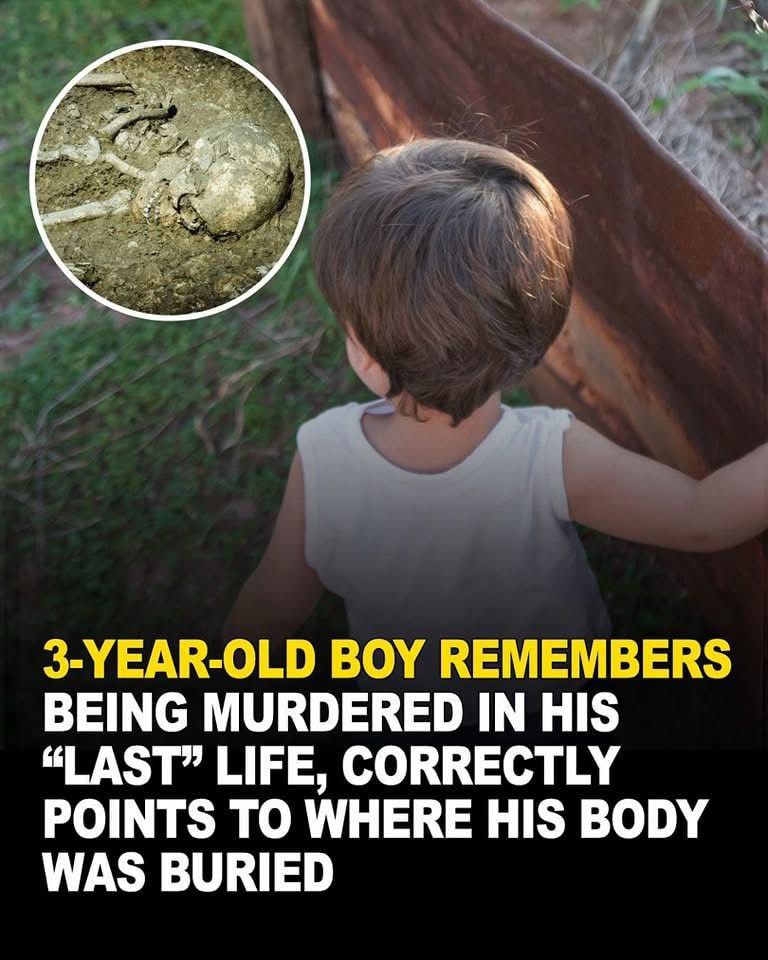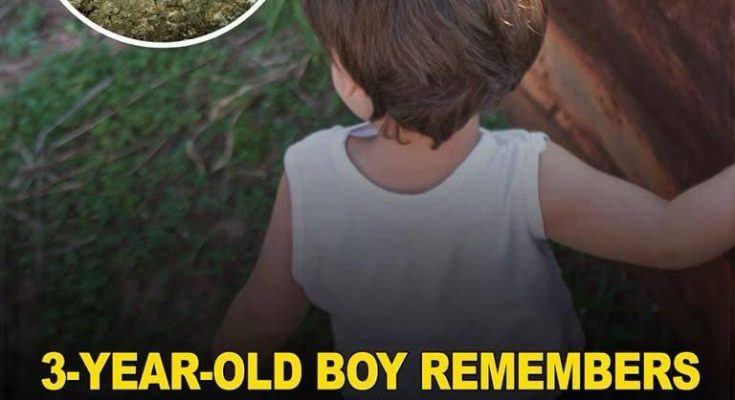In a remote village nestled in the Golan Heights, near the Syria-Israel border, a story unfolded that stunned locals and experts alike. A three-year-old boy from the Druze community made an extraordinary claim—he remembered being murdered in a previous life. While many might dismiss such declarations as mere childhood fantasy, what followed gave this tale a chilling authenticity. The boy not only described his past life and the details of his death, but also led villagers to the precise location of his buried body and the murder weapon. Sure enough, a skeleton and an axe were found exactly where he said they would be.

The case gained further attention when Dr. Eli Lasch, a prominent doctor known for his work in Gaza, witnessed the boy’s revelations firsthand. His observations were later recorded by German therapist and author Trutz Hardo in the book Children Who Have Lived Before: Reincarnation Today. According to Dr. Lasch, the boy’s account was so accurate and consistent that it left little room for coincidence. He had never met the people involved in his alleged past life, yet he spoke about them with striking detail.
One of the most disturbing aspects of this story was the birthmark on the boy’s head—a long red mark that mirrored the fatal injury he claimed to have suffered in his past life. Among the Druze, a religious community that spans Syria, Lebanon, and Israel, there’s a long-held belief that birthmarks are the result of injuries sustained in previous incarnations. This cultural context gave additional weight to the boy’s statements and helped convince even some of the more skeptical members of the community.
As the boy’s memories unfolded, he shocked everyone further by identifying his killer. When confronted, the accused man denied any involvement. However, once the remains and murder weapon were uncovered exactly as described, it was reported that the man privately confessed to the crime. This revelation sent shockwaves through the region and reignited global interest in reincarnation and unexplained phenomena.
While some may chalk this incident up to an uncanny series of coincidences, others see it as compelling proof that reincarnation might be real. The story raises powerful questions about the nature of memory and consciousness—particularly whether it’s possible for the soul or mind to carry experiences from one life to another.
Remarkably, the Golan Heights case is far from unique. Throughout the world, similar accounts of children recalling past lives have emerged. In one of the most famous American examples, James Leininger, a young boy from Louisiana, began having vivid nightmares about crashing in a World War II fighter plane. He showed an inexplicable knowledge of military aircraft, named his former squadron, and even identified an aircraft carrier. His claims were eventually traced back to a real fighter pilot, James Huston, who died in combat. James’s parents were initially skeptical, but the amount of historical detail their son knew eventually led them to believe he had indeed lived before.
Another well-known case occurred in 1930s India, when four-year-old Shanti Devi began recounting her previous life in a town hundreds of miles away. She named her former husband, described her home, and even talked about the circumstances of her death during childbirth. Investigators were able to verify many of her claims, and the case became so widely discussed that even Mahatma Gandhi took interest and launched an inquiry that confirmed her statements.
Birthmarks often play a curious role in reincarnation stories. Dr. Ian Stevenson, a psychiatrist and researcher from the University of Virginia, spent decades investigating children who claimed to remember past lives. He documented more than 2,500 such cases, often finding a connection between the child’s birthmarks or deformities and the injuries they claimed to have received in a previous existence. His work has laid the foundation for modern scientific studies into this field.
Other astonishing cases include a Thai boy who had two birthmarks on his head and claimed he had been a teacher who was shot in a past life. Historical records confirmed that a teacher had been killed in the manner he described. Similarly, a boy in Burma remembered being a soldier who was shot in the chest. He had a distinct birthmark exactly where the bullet supposedly entered.
Researchers like Dr. Jim Tucker have continued Dr. Stevenson’s work at the University of Virginia. Dr. Tucker focuses on cases involving children between the ages of two and five, a common age range for past-life memories to surface. His studies explore the possibility that consciousness may not be entirely tied to the physical brain—an idea also gaining traction in the fields of quantum physics and near-death experiences.
Beliefs in reincarnation are found in many cultures around the world. In Hinduism and Buddhism, the soul is believed to be reborn over multiple lifetimes, learning and evolving spiritually. Native American and African traditions also include concepts of spiritual return and ancestral rebirth, often passed down through oral history.
The story of the Golan Heights boy remains one of the most compelling reincarnation accounts on record. It challenges our understanding of identity, memory, and the boundary between life and death. As science continues to investigate the nature of consciousness, stories like this one push us to rethink what we know—and what we think we know—about the human experience. Whether you’re a skeptic or a believer, one thing is certain: the mystery of reincarnation is far from solved. And until it is, these extraordinary tales will continue to captivate imaginations across the globe.



